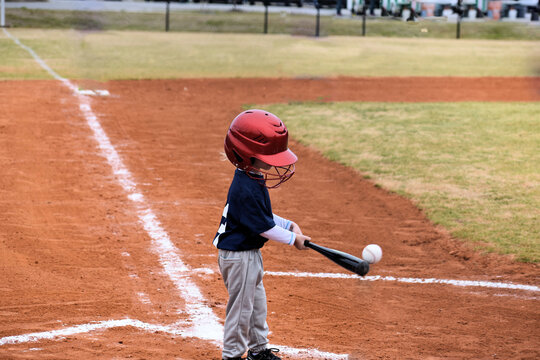Tee Ball
Tee Ball is the entry level division for players, ages 4-6. The experience is grounded in fun, fitness, and fundamentals. The Tee Ball Division is usually co-ed, but some seasons may be structured as a baseball or softball program. Kids playing playing tee-ball at age 4 do play tee-ball again at age 5.
 Tee Ball players use bats and balls designated specifically for use in this division. The roster size for a Tee Ball team averages 7-10 players, with a season featuring 1-2 practices per week and 1-2 games per week (almost always one on Saturday).
Tee Ball players use bats and balls designated specifically for use in this division. The roster size for a Tee Ball team averages 7-10 players, with a season featuring 1-2 practices per week and 1-2 games per week (almost always one on Saturday).
Parents are strongly encouraged to become involved in this entry level of Little League. The assistance of one adult per every 2 or 3 players is often needed during practice and games at this level to help the players keep focus, have fun, and keep learning some fundamentals!
After Tee Ball, player progression to the next division takes into consideration a combination of age, skill, and focus.
Listening skills are important for any team sport, including tee ball. If a younger player (4-5 years old) cannot listen or follow directions, you might want to consider waiting until they are more mature before placing them in what could be a frustrating situation. Better to wait and have a good experience, than rush it and turn them off from baseball.
By the end of Tee Ball, a player should be able to properly grip a bat and hit a ball off a tee, run the bases in correct order, generally know how to field a ground ball, throw a ball correctly (e.g. “step and throw”), and have a general knowledge of the positions (first base, second base, shortstop, etc.).
Expect about 3 “experiences” per week (1-2 practices, 1-2 games), with games lasting about 3-4 innings or about an hour. Practices are usually 45-60 minutes. Players should be able to focus for that amount of time, with some guidance and encouragement.
Players who are considering moving to Coach Pitch should practice hitting pitched balls (underhand is fine, overhand preferred) with an adult before moving to the next level. This can be done in the backyard or park (doesn’t have to be on a baseball field) and utilize non-baseballs (e.g. wiffle or tennis balls are perfect). The key here is for the player to continue to hone their grip, timing, and hand-eye coordination to some extent.
...